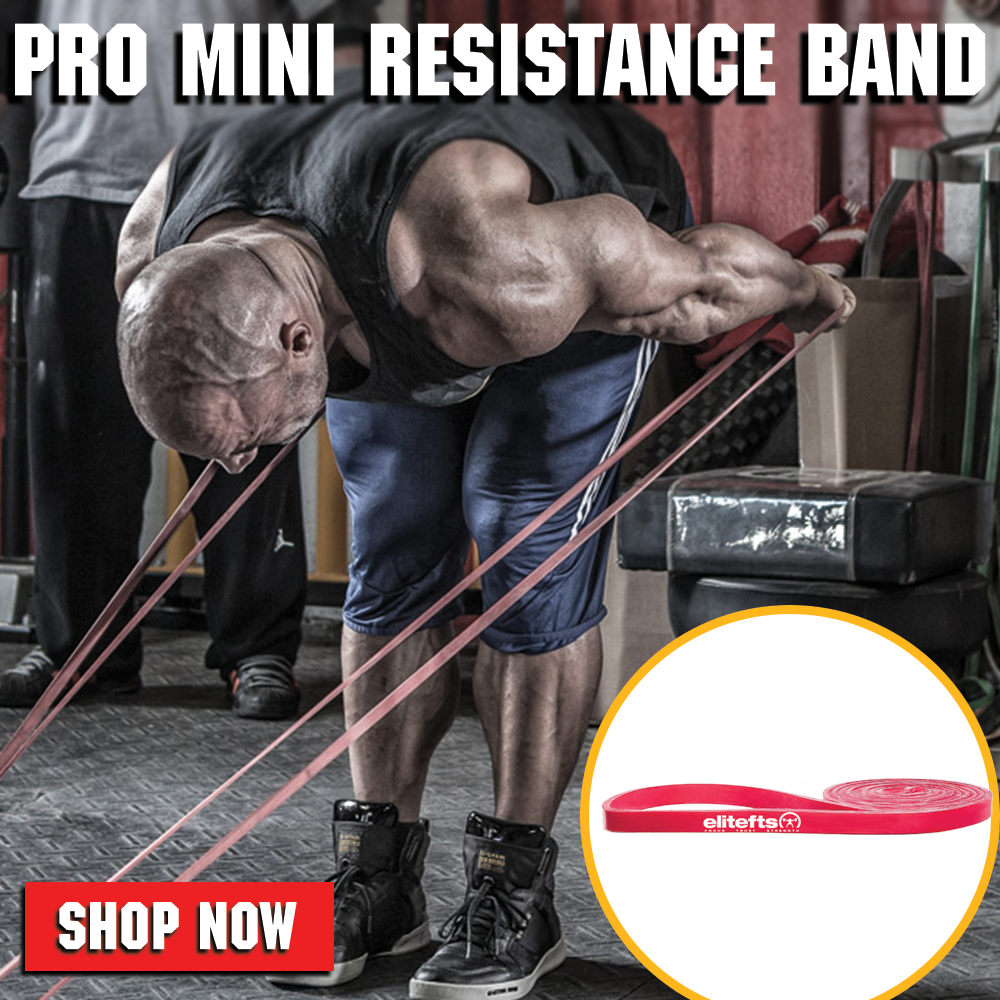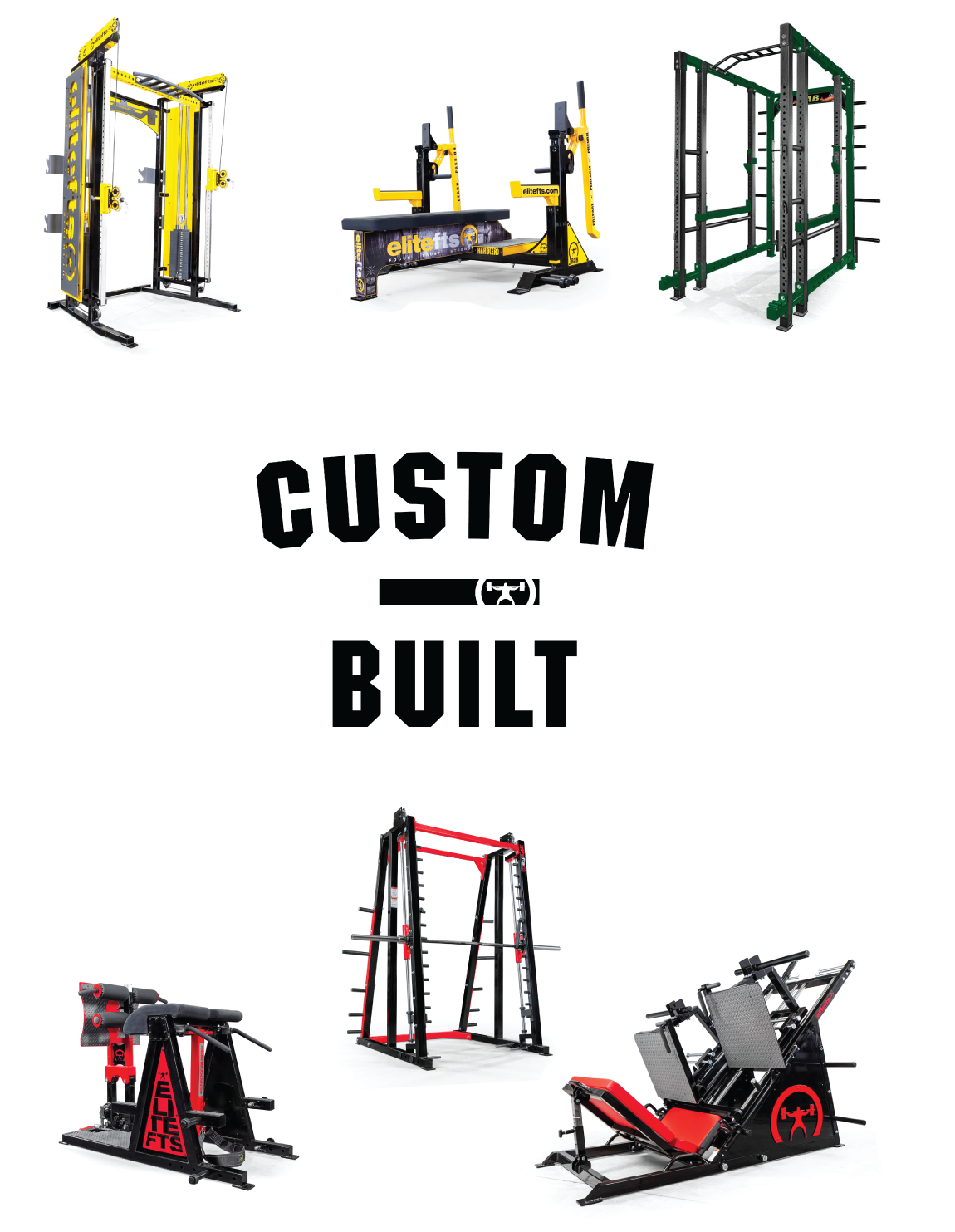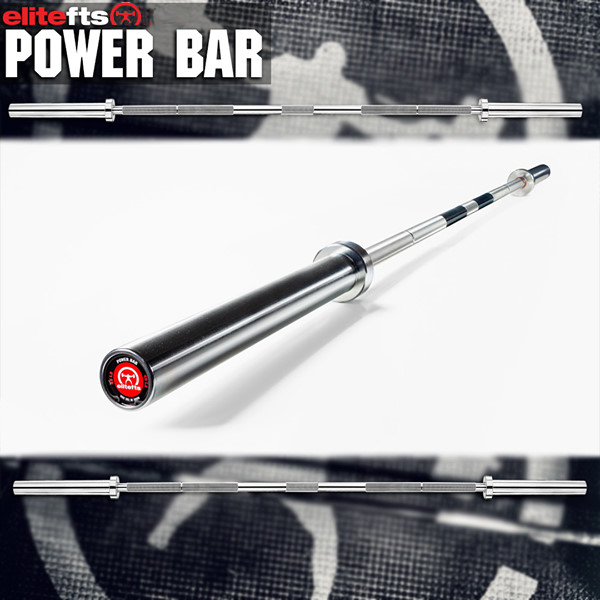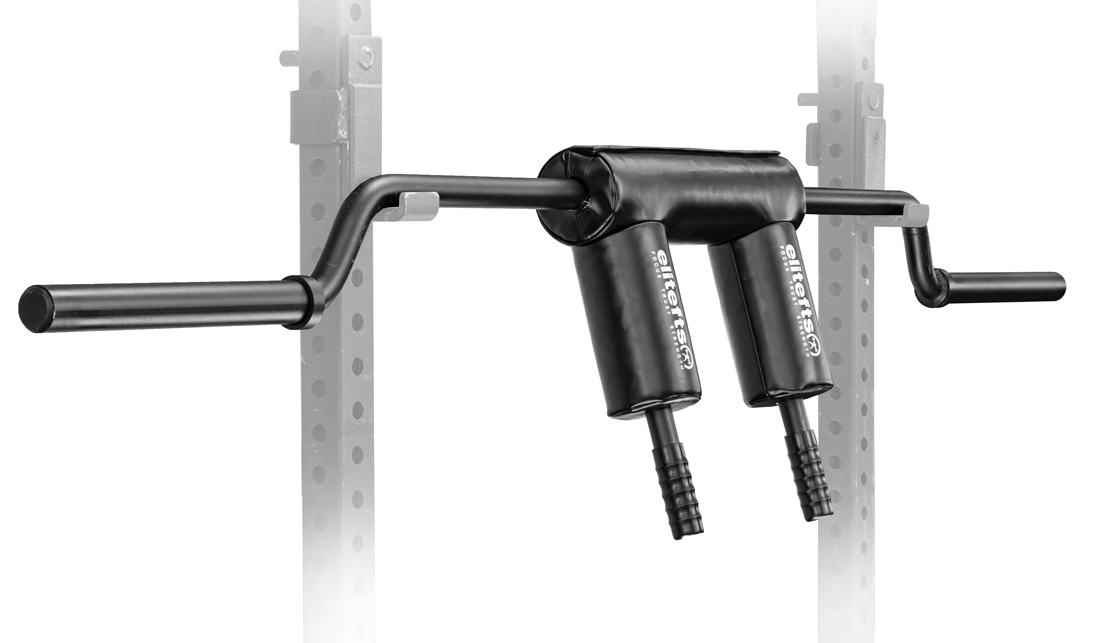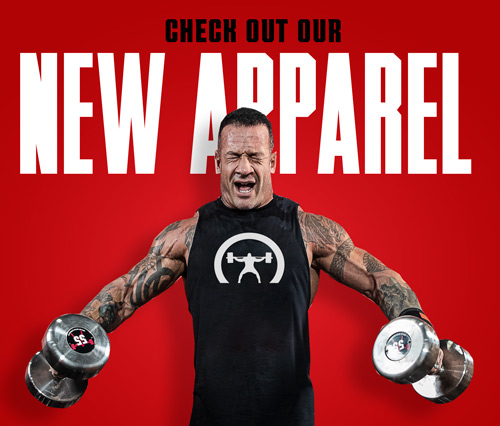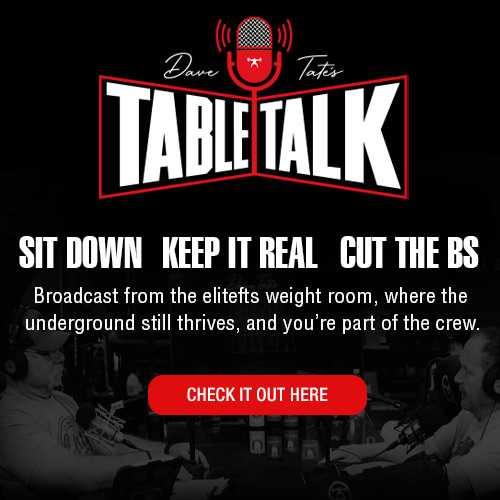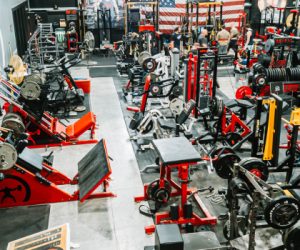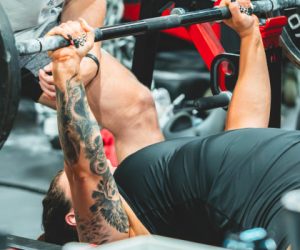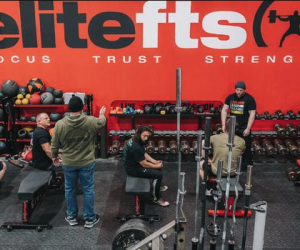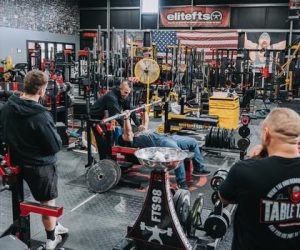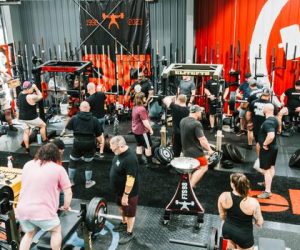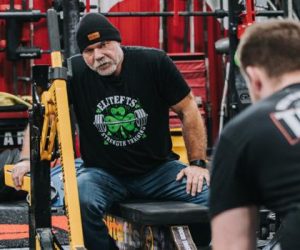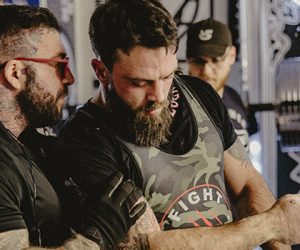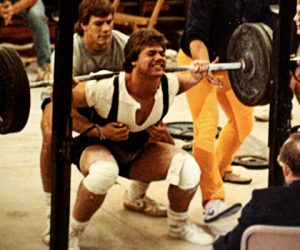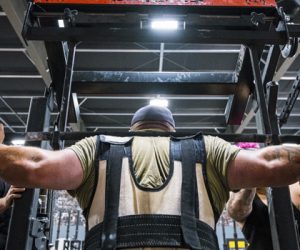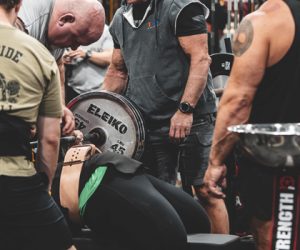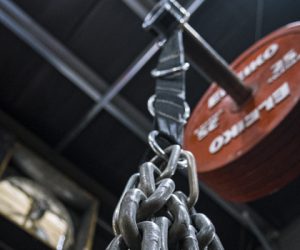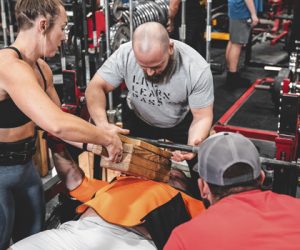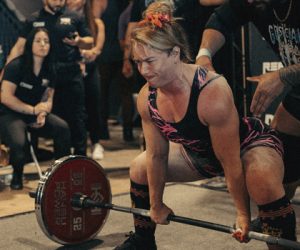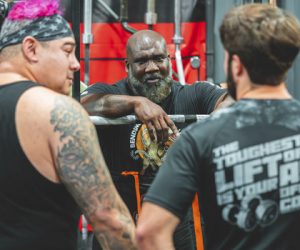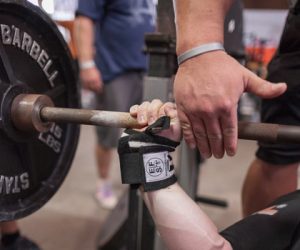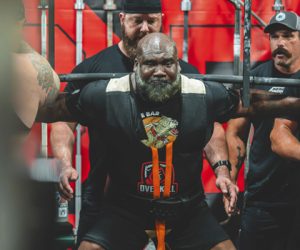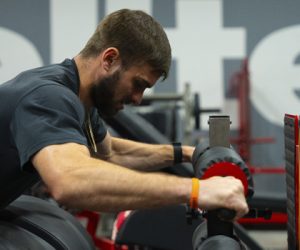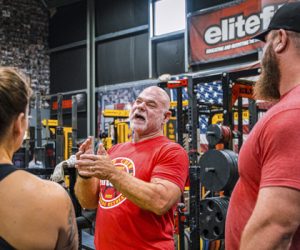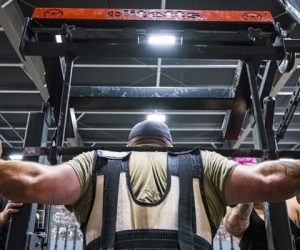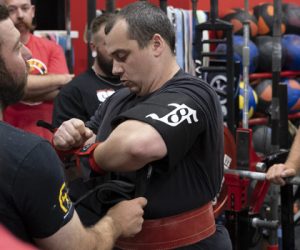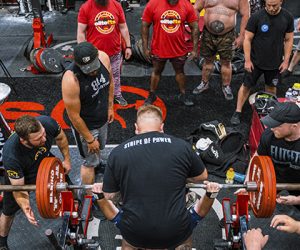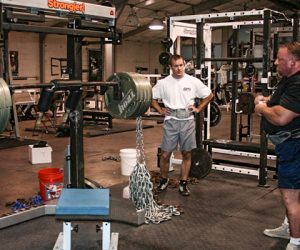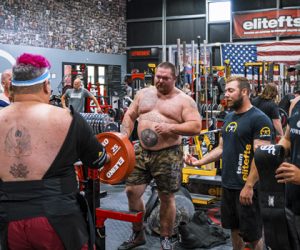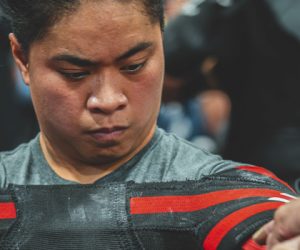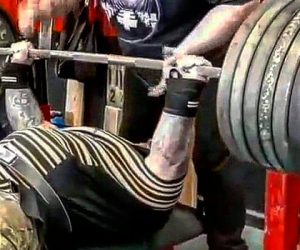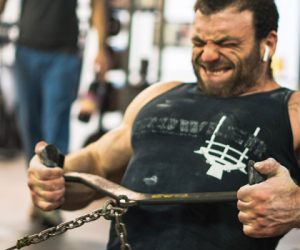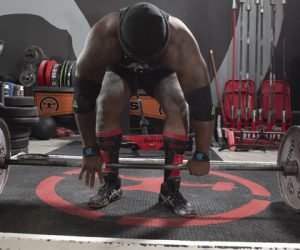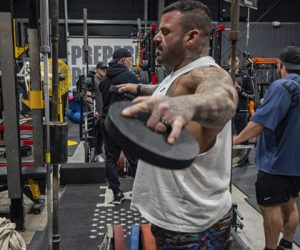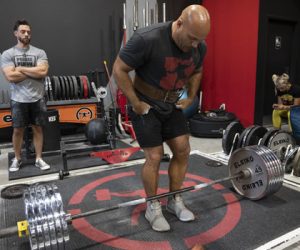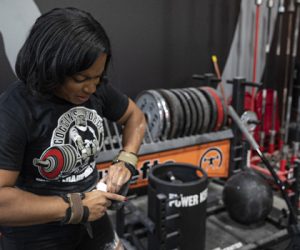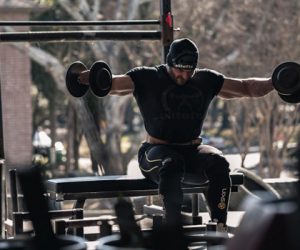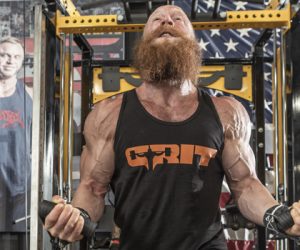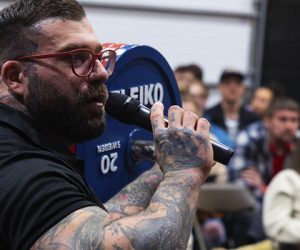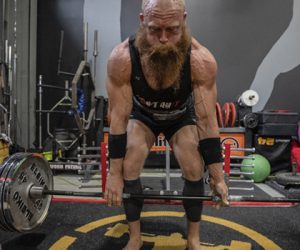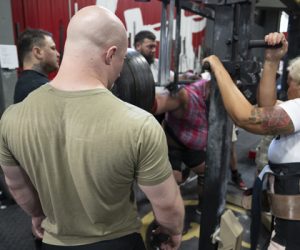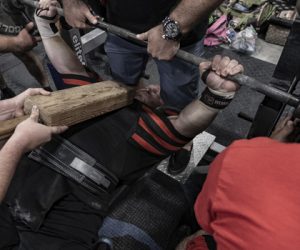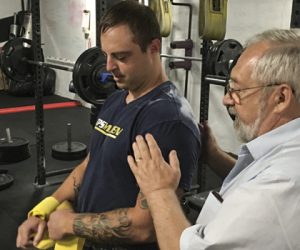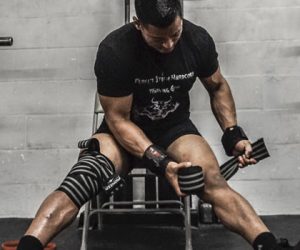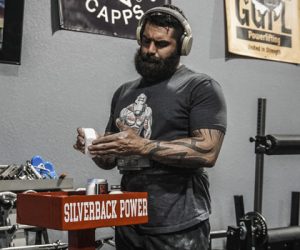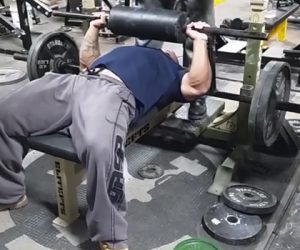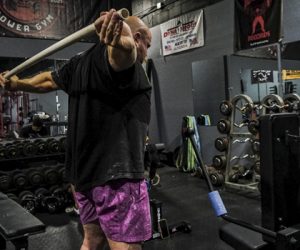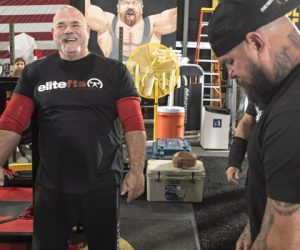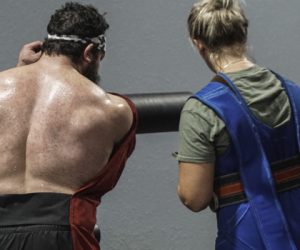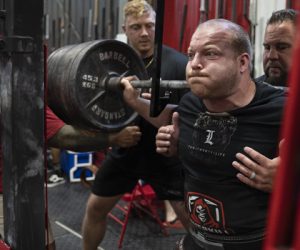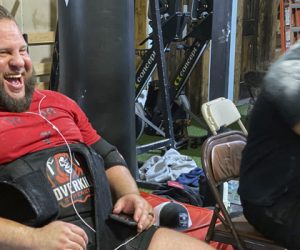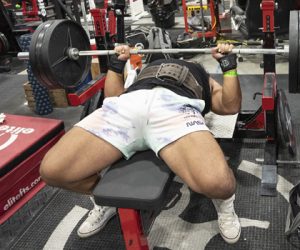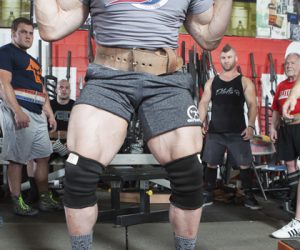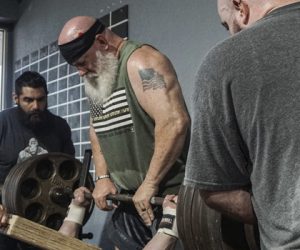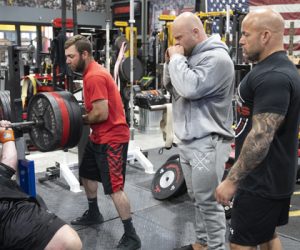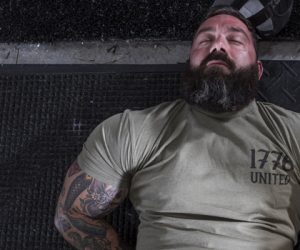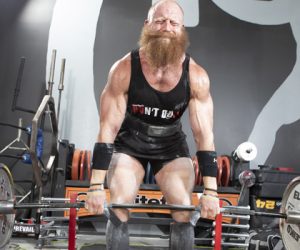How to Use the Conjugate System in a Commercial Gym
Many believe that unless you have access to the best gym with all the latest equipment, you can’t effectively train using a Conjugate-style system.
The Bench Press Prep No One Talks About
If your bench press has plateaued or left your shoulders aching, the problem may not be your setup—it could be a lack of shoulder internal rotation.
How to Give and Get the Best Bench Press Lift-Off
A smooth, precise lift-off can make or break your bench press—especially on meet day.
What Everyone Could Learn From Meet Prep
Meet prep isn’t just for competitive powerlifters—it’s a masterclass in focused, effective training.
The Unyielding Power of Consistency
Consistent effort leads to mastery and success, both in the gym and in life. Meet Ivan…
The Powerlifting Pond
Do you remain a big fish in a little pond or venture out of your comfort zone and into bigger meets?
My First 500 Pound Squat Cycle
This is the exact training cycle I used in the mid-80s to squat my first 500 pounds.
Will Equipped Powerlifting Rise Again?
Lifters’ longevity in the sport may ultimately dictate which division becomes the most popular.
Why Speed Work for Bench Press Isn’t Forever
Key words: bench press and forever. It took Nate 15 years of speed work to come to this conclusion.
The First 700-Pound Bench Press at Westside Barbell
Kenny Patterson shares his intense training to his historic event of being the first to bench press 700 pounds representing Westside Barbell.
5 Reasons Why You Need Bands and Chains
Bands and chains can improve joint health and longevity. Understand the HOW, WHEN, and WHY so you can program these tools logically.
Top-5 Mistakes in the Bench Press
Avoid these five mistakes when benching in gear, raw, or unlimited.
16 Week Conjugate Periodization Program For Novice Powerlifters
Limit the variables that’ll derail your early powerlifting experience as an inexperienced lifter. Here’s conjugate in a nutshell.
Autoregulation After a Big Injury
Autoregulation based on back pain is KEY to lifting heavy again. Part 2 of the series is here.
How to Approach Training AFTER Your Meet
Come back stronger for your next meet by following these steps essential to your recovery and development as a lifter.
How to Bench 5 Plates Raw: 0 to 400 Real Quick
As long as you are meeting your caloric needs and are getting enough sleep every night, training is by far the most important thing you have to get stronger.
The #1 Hypertrophy Mistake Powerlifters Make
Hypertrophy training is for powerlifters, too! Read on to avoid the #1 mistake powerlifters make, and to learn how to approach hypertrophy for powerlifting.
Contrast Sets – One of the BEST Powerbuilding Methods
Revolutionize your workouts for big gains with contrast sets. Who doesn’t want more effective reps?
Congratulations, You Just Ate Your Way Up to Ed Coan
You might feel eager to move up a weight class, but you never know who might be lurking in the class up. Make sure you’re ready, follow these tips!
The Education of a Powerlifter
This is one of the best and most popular articles to ever be posted on the site. After you read this you will understand what it means to Live, Learn, and Pass On.
Powerlifting Proficiency: Performance and Aesthetics Criteria
Powerlifting competitions are more than big gorillas lifting weights. Consider the aesthetics, psychomotor skills, and failures.
6 Tips to Blow Up Your Bench Press
If your bench has stalled, I guarantee there’s a tip in here that will start to move the barbell.
My Time Training Metal Militia Style at Adirondack Barbell
It’s all in how you execute the bench. Do you have a proper bar path? What’s the press angle? Are you in a position of power?
Successful Box Squat Cycles
Rather than just writing one cycle, I’ve decided to make an easy to follow quasi-article that contains all the different cycles for the squat that I’ve used with success. YES to chains and bands.
When Should I Put on My Gear?
Uncover strategies for maximizing your training sessions while minimizing unnecessary fatigue.
The Seven Habits of Ineffective Lifters
From neglecting technique to overtraining, learn how to overcome these seven habits and pave your way to podium wins.
Is Shirted Board Work Killing Your Bench Press?
Learn from the personal journey of Nathan Robertson who transformed his bench press by reevaluating relying on shirted board press training.
A Bodybuilding Offseason (with Full Program) for the Powerlifter
The bad news: You can’t go hard all the time. It’s the quickest way to burn out — to see your progress stall, to get injured, and to lose interest in your training. The good news: A bodybuilding-style approach to the offseason has a ton of benefits for the powerlifter.
Why I Hate the Deadlift
The deadlift is just that thing you have to do in a meet before you go to dinner.
How to Make Gains in Your Offseason
You’ve just competed, now what?Here are YOUR tips for training during the powerlifting offseason.
What to Do With Your Head in the Deadlift
Learning what to do with your neck and head in your deadlifts might give you just what you need to hit a new PR. Don’t take head positioning for granted.
Letter to a First-Time Competitor
Are you getting ready for your first powerlifting meet? Learn these tips and tricks now before you step onto the platform.
Bodybuilding for the Powerlifter: Extra Workouts
Extra workouts, if programmed right, can kick your training and results up a notch.
Scale the Summit 6 Weeks Out
Peaking for your meet day should happen around six weeks out. Here’s a thorough plan to make sure you get the most out of your lifts when the time comes to step on the platform.
The Lost Art of Whole-Body Training: Lessons from History
Whole-body training is highly underutilized in today’s world, and yet, it’s one of the fundamental programming methodologies to date.
When Grips Did Not Give
Travis Rogers shares his thoughts and insights after spending time with Dave Tate on a recent Table Talk.
Conditioning for Powerlifters
Powerlifters equate cardio and conditioning with losing strength gains, but that couldn’t be further from the truth.
Achievements, Success, and Fulfillment
Most powerlifters chase success and fulfillment through PRs and competition, but there is success to be had in the process. Don’t forget that.
Powerlifting Federations Are a Service Industry Business
Powerlifting federations are a business first. So make sure you align yourself to a federation that speaks to your philosophy, values, and ethos.
Why Conjugate Didn't Work For You
The conjugate method is tried and true, but many will inevitably butcher execution. Learn how to course correct to get the most out of your conjugate program.
Programming For Everyone
Anyone, regardless of experience, should be able to program workouts for themselves. Once you understand your goals, use these easy tips to build a program that delivers results.
You Are Not a Genetic Outlier
Most people train like the athletes and Olympians they admire, but that’s poor practice. Train for YOU, and watch your progress skyrocket.
I Was Coached By Sheiko
Training with Boris Sheiko changed me as both a powerlifter and a coach, and I’m forever grateful for it.
Training Considerations for the Aging Powerlifter
Your biological age is different than your training age. If you’ve racked up years of training in the gym, you should learn the difference between the two.
The Urgency of Meet Prep Training
Use your fleeting meet prep time wisely, as Azrael, the killer of training time, will be coming for you…
The Bar You're Not Using But Should Be
Most lifters will have one if not two, main issues when they squat: pitching forward and tightness. What does this bar help fix?
How to Make Your Rehab Suck
If getting under the bar is the end goal post-injury, here’s what NOT to do. By knowing the wrong approach, it’s easier to grasp what’s right.
Lunch with Dave Tate
Powerlifting is a mess, and sometimes we wonder why we even bother. Yet, it’s given me a tremendous mentor and unexplainable gifts.
Are You Overtrained? Should You Deload?
Two catchwords that continue to make me shake my head are overtraining and deload. The end goal is a balance between training and recovery.
Stop Neglecting Your Posterior Chain
It’s interesting seeing a quad-dominant athlete squat 400 pounds but struggle to squat off a box with 135.
You Don’t Know JAC Squat
The basis of the program is conjugate periodization, with some scheduled deloads and a reverse band peaking schedule from Brian Carroll’s 10/20/Life.
Equipped Powerlifters, Control Your Variables
You can master all of these variables: gear fit, gear sponsors, travel, and weight. But If not, they’ll ruin an entire training cycle.
No More Shitty Pecs
This is a fun one where I relate viscoelasticity to training stimuli in a way you’ll understand to fix your shitty pecs…
16-Week Powerlifting/Bodybuilding Hybrid Program
If you have an equal love for bodybuilding and powerlifting with a goal to become bigger and stronger, this program is for YOU.
3 Ways to Keep Making Progress
Where do you turn for answers to continue to make progress? Beyond elitefts, are you using an online coach, a club, or consultations?
10 Reasons Why You Aren't Making Progress
Why do people give up after only a few years? Sticking to a plan for only four weeks? Always looking for motivation? Training too easy…
You're Screwed Without A Crew
In a recent elitefts poll, 88% of lifters responded that they train alone. I used to train alone (when I was weak). Then I found a team and turned elite.
14 Deadlift Tips and Tricks
His not-so-secret deadlift tricks and personal tips for fixing those bad habits. Insight from the man himself, Dave Tate.


